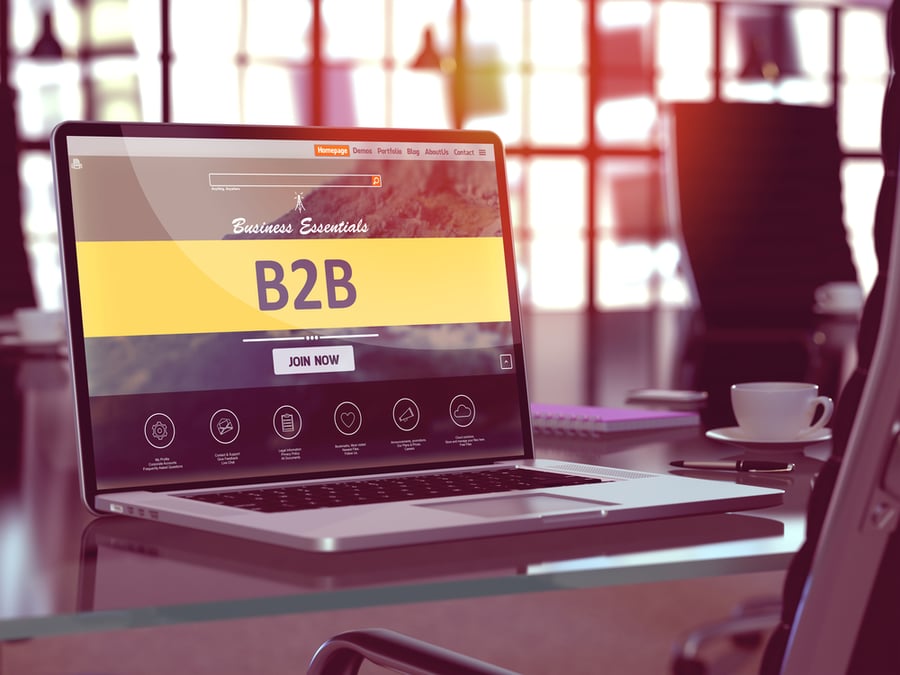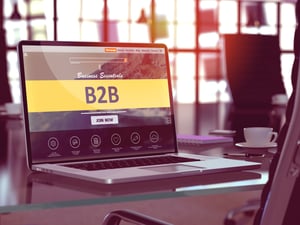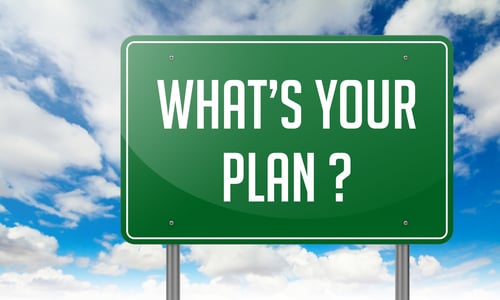
Blog

The Pandemic Has Changed B2B Sales Forever
If your B2B sales strategy relied on firm handshakes, catered lunches, and traditional in-person “dog and pony shows” then 2020 was likely a disaster and 2021 will not be much better.
As the COVID-19 pandemic second wave crests, with more lockdowns and economic restrictions across the country, businesses that have not embraced digital transformation, especially small and medium-sized businesses (SMB), may not make it through the first quarter of 2021.
Moira Vetter in Forbes says, “Although larger corporations have been transforming to digital for years, 2020 has forced SMB companies to rapidly rethink their processes, platforms, and the speed at which they could shift. That speed to deployment has meant the difference between making it and shuttering to some companies.”
For B2B Sales This is the New Normal
If you are waiting for “normal” to return, good luck, as the pandemic has changed B2B sales forever.
Mary Shea, principal analyst at Forrester, agrees: “I’m calling 2020 the year that B2B, sales, marketing and buying has changed forever. But these trends that are occurring as a result of COVID-19 hardships are trends that were already in play: the face-to-face sales meeting has been on a downward trajectory since 2017.”
The script is likely to stay flipped, with only one in five B2B buyers wanting to return to face-to-face transactions in a post-pandemic world, according to research from McKinsey & Company.
For buyers, the advantages range from:
- Safety during pandemic
- Easier to digest product and service information
- Streamlining of orders and service
- Overall speed and convenience vs. traditional B2B sales experience
It is not just buyers that prefer the digital experience as sellers are also unlikely to return to pre-pandemic B2B tactics.
“More than three quarters of buyers and sellers say they now prefer digital self-serve and remote human engagement over face-to-face interactions—a sentiment that has steadily intensified even after lockdowns have ended,” McKinsey authors summarize in their “These eight charts show how COVID-19 has changed B2B sales forever” article.
B2B Buyers Still Making Purchases
While the pandemic fractured sales projections, business did not grind to a halt and B2B purchases were still being made.
did not grind to a halt and B2B purchases were still being made.
In the Harvard Business Review, Jeff Winters wrote, “Covid-19 has changed the world of B2B sales. Even if you started the year with a packed pipeline, few businesses have escaped the economic turmoil, and about 50 percent of B2B buyers are holding off on purchases because of the pandemic … However, businesses that have been less hard-hit — namely in the technology, e-commerce, and marketing sectors — can read that 50 percent statistic in reverse: Half of B2B buyers are not holding off on purchases, meaning deals in their markets are still moving forward."
Not only are purchases being made but B2B buyers are willing to make large purchases via digitals channels.
Prior to the pandemic it was assumed that buyers would be willing to make smaller purchases digitally but not make large-ticket decisions, but McKinsey research finds that “70 percent of B2B decision makers say they are open to making new, fully self-serve or remote purchases in excess of $50,000, and 27 percent would spend more than $500,000.”
Video and Live Chat Key to B2B Sales
Closing B2B sales remotely means a reliance on todays' technologies, especially video and live chat.
McKinsey found that, “the amount of revenue generated from video-related interactions has jumped by 69 percent since April 2020. Together, e-commerce and videoconferencing now account for 43 percent of all B2B revenue, more than any other channel. Customers also made it clear that, given the choice, they prefer video to phone.”
The decline of in-person sales since COVID-19 is matched by the rise in video and live chat:
- Traditional/in-person sales interaction has declined from 61 to 29 percent
- Video interaction has risen from 38 to 53 percent
- Live chat interaction has risen from 40 to 49 percent
The changes are here to stay with 89 percent surveyed in August by McKinsey saying that it was “very or somewhat likely” that the new B2B sales models would continue into 2021.
Does your business have the right information, content, and tools to succeed in the new B2B normal? Let's have a discussion and see if we can help you succeed in 2021 and beyond.
Subscribe to email updates
Recent posts

Related Articles

Topics

Topics
Topics






